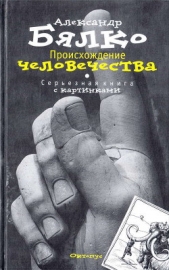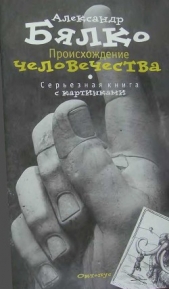Неизвестная история человечества

Неизвестная история человечества читать книгу онлайн
В «Неизвестной истории человечества» Майкл Кремо и Ричард Томпсон приводят поразительные данные, о которых научная общественность была когда-то осведомлена. Долгое время эти сведения были вне поля зрения ученых благодаря так называемой «фильтрации знаний». Суть сводится к тому, что современный человек существовал на Земле на протяжении многих миллионов лет.
Чтобы извлечь эти данные на свет божий, авторам пришлось выполнить колоссальный объем исследовательской и аналитической работы, результаты которой столь впечатляющи, изложены столь подробно, что уже поэтому достойны самого пристального внимания. Настоящая работа предназначается широкому кругу читателей. Мы также надеемся, что она привлечет внимание и непредубежденных специалистов.
Внимание! Книга может содержать контент только для совершеннолетних. Для несовершеннолетних чтение данного контента СТРОГО ЗАПРЕЩЕНО! Если в книге присутствует наличие пропаганды ЛГБТ и другого, запрещенного контента - просьба написать на почту [email protected] для удаления материала
Hill, 0. (1945) Nittaewo, an unsolved problem of Ceylon. Loris, 4:.21-262.
Но, Т. Y„Marcus, L. R, and Berger, R. (1969) Radiocarbon dating of petroleum-impregnated bone from tar pits at Rancho La Brea, California. Science 164: 1051—1052.
Holmes, W. H. (1899) Review of the evidence relating to auriferous gravel man in California. Smithsonian Institution Annual Report 1898—1899, pp. 419—472.
Holmes, W. H. (1919) Handbook of aboriginal American antiquities. Part I. Smithsonian Institution, Bulletin 60… Hood, D. (1964) Davidson Black. Toronto, University of Toronto.
Hooijer, D. A. (1951) The age of Pithecanthropus. American Journal of PhysicalAnthropology, 9: 265—281.
Hooijer, D.A. (1956) The lower boundary of the Pleistocene in Java and the age of Pithecanthropus. Quatemaria, 3: 5-10.
Hopwood, A. T. (1932) The age ofOldoway man. Man. 32: 192—195.
Hough, J. L. (1958) Geology of the Great Lakes.Vrbana, University of Illinois.
Howell, R C. (1966) Observations on the earlier phases of the European Lower Paleolithic. American Anthropologist, 68(2, part 2): 89.
Howell, R C. (1978) Hominidae. In Maglio, V. J., and Cooke, H. B. S., eds. Evolution of African Mammals. Cambridge, Harvard University.
Howells, W. W. (1977) Hominid fossils. In Howells, W. W„and Tsuchitani, P. J., eds. Palaeoanthropology in the People's Republic of China. Washington, D. C., National Academy of Sciences, pp. 66-77.
Hrdlicka.A. (1907) Skeletal remains suggesting or attributed to early man in North America. Smithsonian Institution. Bureau of American Ethnology. Bulletin33.
Hurford, A. J., Gleadow, A. J. W, and Naeser, C. W. (1976) Fission-track dating of pumice from the KBS Tuff, East Rudolf, Kenya. Nature, 263: 738—740.
Huxley, Т. H. (1911) Man's Place in Nature. London, Macmillan.
Huyghe, P. (1984) The search for Bigfoot. Science Digest, September, pp. 56 – 59, 94, 96.
Ingalls, A. G. (1940) The Carboniferous mystery. Scientific American. 162: 14.
Irving, W. N. (1971) Recent early man research in the north. Arctic Anthropology.8(2): 68-82.
Irwin-Williams, C. (1978) Summary of archaeological evidence from the Valsequillo region, Puebia, Mexico. In Bowman, D. L., ed. Cultural Continuity in Mesoamerica. London, Mouton, pp. 7-22.
Irwin-Williams, C. (1981) Comments on geologic evidence forage of deposits at Hueyatlaco archaeological site, Valsequillo, Mexico. Quaternary Research, 16: 258.
Isaac, G.L.(1978) The archaeological evidence for the activities of early African hominids. In Jolly, C. J., ed. Early Hominids of Africa. London, Duckworth, pp. 219—254.
Issel, A. (1868) Resume des recherches concernant 1'anciennete de 1'homme en Ligurie. Congres International d'Anthropologie et d'ArcheologiePrehistoriques, Paris 1867, Compte Rendu, pp. 75-89. (*)
Issel, A. (1889) Cenni sulla giacitura dello scheletro umano recentmente scoperto nel pliocene di Castenedolo. Bullettino di Paletnologia Italiana, 15: 89-109. (*)
Jacob, К., Jacob, C., and Shrivastava, R. N. (1953) Spores and tracheids of vascular plants from the Vindhyan System, India: the advent of vascular plants. Nature, 172: 166—167.
Jacob, T. (1964) A new hominid skull cap from Pleistocene Sangiran. Anthropologica, New Series, 6: 97-104.
Jacob, T. (1966) The sixth skull cap of Pithecanthropus erectus. American Journalof Physical Anthropology, 25: 243—260.
Jacob, T. (1972) The absolute age of the Djetis beds at Modjokerto. Antiquity46: 148.
Jacob, T. (1973) Palaeoanthropological discoveries in Indonesia with special reference to finds of the last two decades. Journal of Human Evolution, 2: 473—485.
Jacob, Т., and Curtis, G. H. (1971) Preliminary potassium-argon dating of early man in Java. Contribution of the University of California Archaeological Research Facility. 12: 50.
Jessup.M. К. (1973) The Caseforthe UFO. Garland, Texas, Uaro Manufacturing Company.
Jia, L. (1975) The Cave Home of Peking Man. Beijing, Foreign Languages Press.
Jia, L. (1980) Early Man in China. Beijing, Foreign Languages Press.
Jia, L. (1985) China's earliest Palaeolithic assemblages. In Wu, R., and Olsen, J. W., eds. PalaeoanthropologyandPalaeolithic Archaeology of the People'sRepublic of China. Orlando, Academic Press, pp. 135—145.
Jimison, S. (1982) Scientists baffled by space spheres. Weekly World News, July 27.
Johanson, D. C. (1976) Ethiopia yields first 'family' of man. National Geographic.] 50: 790-Sl.
Johanson, D.C., and Coppens, Y. (1976) A preliminary anatomical description of the first Plio-pleistocene hominid discoveries in the Central Afar, Ethiopia.American Journal of Physical Anthropology, 45: 217—234.
Johanson, D. С., and Edey, M. A. (1981) Lucy: The Beginnings of Humankind. New York, Simon and Schuster.
Johanson, D. C„Masao. F. T„Eck. G. G., White, T. D., Walter, R. C., Kimbel, W. H., Asfaw, В., Manega, P., Ndessokia, P., and Suwa, G. (1987) New partial skeleton of Homo habilis from Olduvai Gorge, Tanzania. Nature, 327: 205 – 209.
Johanson, D. C„and Shreeve, J. (1989) Lucy's Child. New York, William Morrow.
Johanson, D. C., and White, T. D. (1979) A systematic assessment of the early African hominids. Science. 203: 321—330.
Jones, E. (1953) The Life and Work of Freud. Vol. 1. New York, Basic Books.
Josselyn, D. W. (1966) Announcing accepted American pebble tools: the Lively Complex of Alabama. Anthropological Journal of Canada, 4(1): 24-31.
Kahike, H. (1961) On the complex Stegodon-Ailuropoda fauna of southern China and the chronological position of Gigantopithecus blacki von Koenigswald. Vertebrata Palasiatica, 5(2): 83-108.
Keith, A. (1928) The Antiquity of Man. Vol. 1. Philadelphia, J. B. Lippincott.
Keith, A. (1931) New discoveries relating to the antiquity of man. New York, W. W. Norton.
Keith, A. (1935) Review ofTTie Stone Age Races of Kenya, by L. S. B. Leakey. Nature, 135: 163—164.
Kennedy, G. E. (1983) Femoral morphology m Homo erectus. Journal of HumanEvolution, 72. 587—616.
Klaatsch, H. (1907) Review of La question de I'homme tertiaire by L. Mayet. Zeitschrift fur Ethnologic, 39: 765—766. (*)
Klein, C. (1973) Massif Armoricain et Bassin Parisien. Strasbourg, Association des Publications pres les Universites de Strasbourg. 2 vols.
Kounnisky, J., ed. (1977) Illustrated Encyclopedia of Minerals and Rocks. London, Octopus.
Krantz.G. S. (1975) An explanation for the diastema of Javan erectu.? skull IV. In Tuttle, R. H., ed. Paleoanlhropology: Morphology and Paleoecology. The Hague, Mouton, pp. 361—370.
Krantz, G. S. (1982) Review of Halpin, M., and Ames, M. M., eds. ManlikeMonsters on Trial: Early Records and Modern Evidence. Cryptowology.I: 94-100.
Krantz, G. S. (1983) Anatomy and dermatoglyphics of three Sasquatch footprints. Cryptowology, 2: 53-81.
Kurten, B. (1968) Pleistocene Mammals of Europe. Chicago, Aldine.
Laing, S. (1893) Problems of the Future. London, Chapman and Hall.
Laing, S. (1894) Human Origins. London, Chapman and Hall.
Latimer, В., and Lovejoy, С. О. (1990а) Hallucial metatarsal joint in Australopithecus afarensis. American Journal of Physical Anthropology, 82: 125—133.
Latimer, В., and Lovejoy, C. 0. (1990b) Metatarsophalangeal joint of Australopithecus afarensis. American Journal of Physical Anthropology, 83: 13-23.

























